
11-05: Trigonometry and Trigonometric Ratios
Trigonometry: the study of how sides and angles of a triangle are related to each other
The Right Angle Triangle
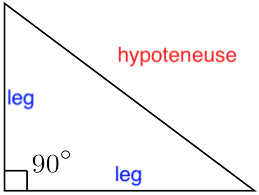
A right angle triangle has a 90º angle
The side opposing the 90º angle is called the hypotenuse
the other two sides are called the legs
Labelling Triangles
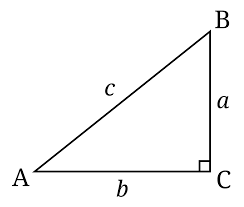
The side opposite an angle and vertex becomes the lowercase letter of that angle and vertex
Pythagorean theorem
a² + b² = c²
leg² + leg² = hypotenuse²
used only for side lengths, cannot be used for angles
Trigonometric Ratios
Primary Trigonometric Ratios | Secondary Trigonometric Ratios |
|---|---|
sinθ = O/H | cscθ = H/O |
cosθ = A/H | secθ = H/A |
tanθ = O/A | cotθ = A/O |
Secondary trig ratios are primary trig ratios, flipped
cscθ = 1/sinθ
secθ = 1/cosθ
cotθ = 1/tanθ
→ you can solve by using the reciprocal when facing a secondary trig ratio
SOH CAH TOA is the mnemonic device used for primary trig ratios (secondary trig ratios are just flipped)
Angles of Elevation and Depression
Most often seen in word problems
Angle of Elevation
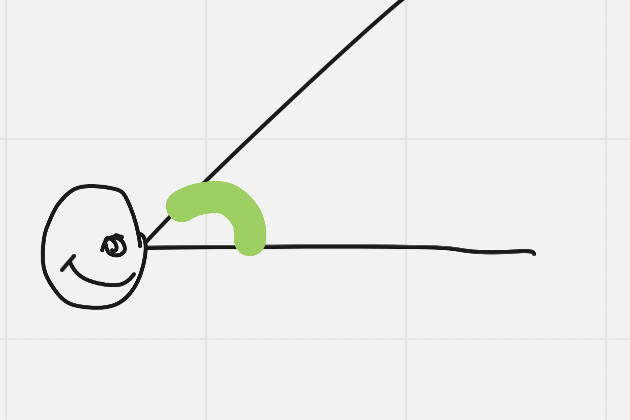
The angle between the line of sight and the horizontal from the eye
Angle of Depression

The angle when looking down, between the line of sight and the horizontal from the eye
Because of Z pattern angles, the angle of elevation and depression are actually the same (and are dependent on a question’s phrasing)
Exact Values
You may not use decimals here, as that is not the true exact value
Special Triangles
Used to find the exact values for 45º, 45º isosceles triangles and for 60º, 30º triangles (remember: sum of a triangle’s angles must be 180º)
Remember that you must rationalize your final answer
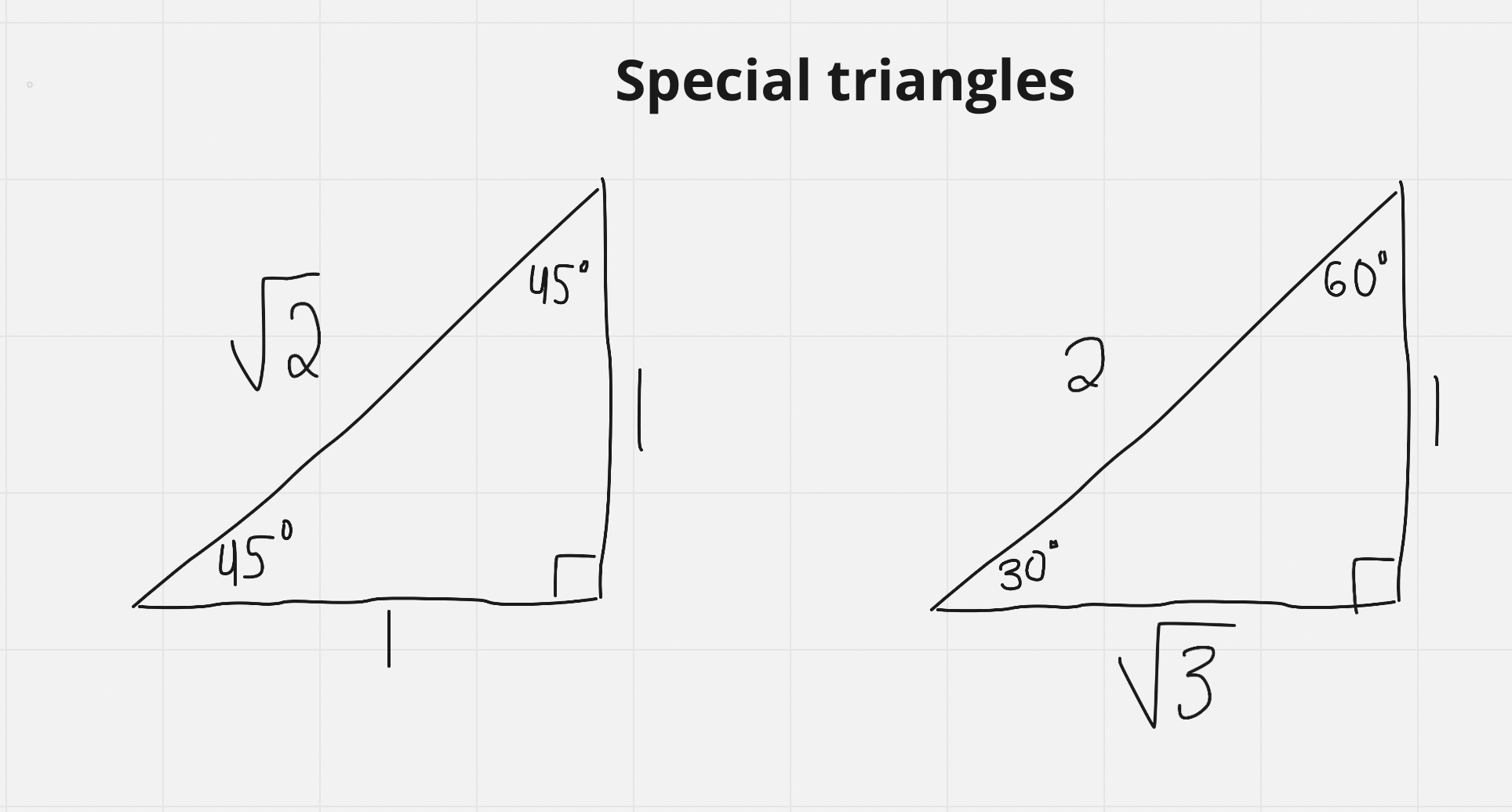
Trig Ratios, Angles Greater Than 90º
Angles in standard position are always measured from the initial arm to the terminal arm, counterclockwise (arrow always drawn)
Angles measured closckwise are negative
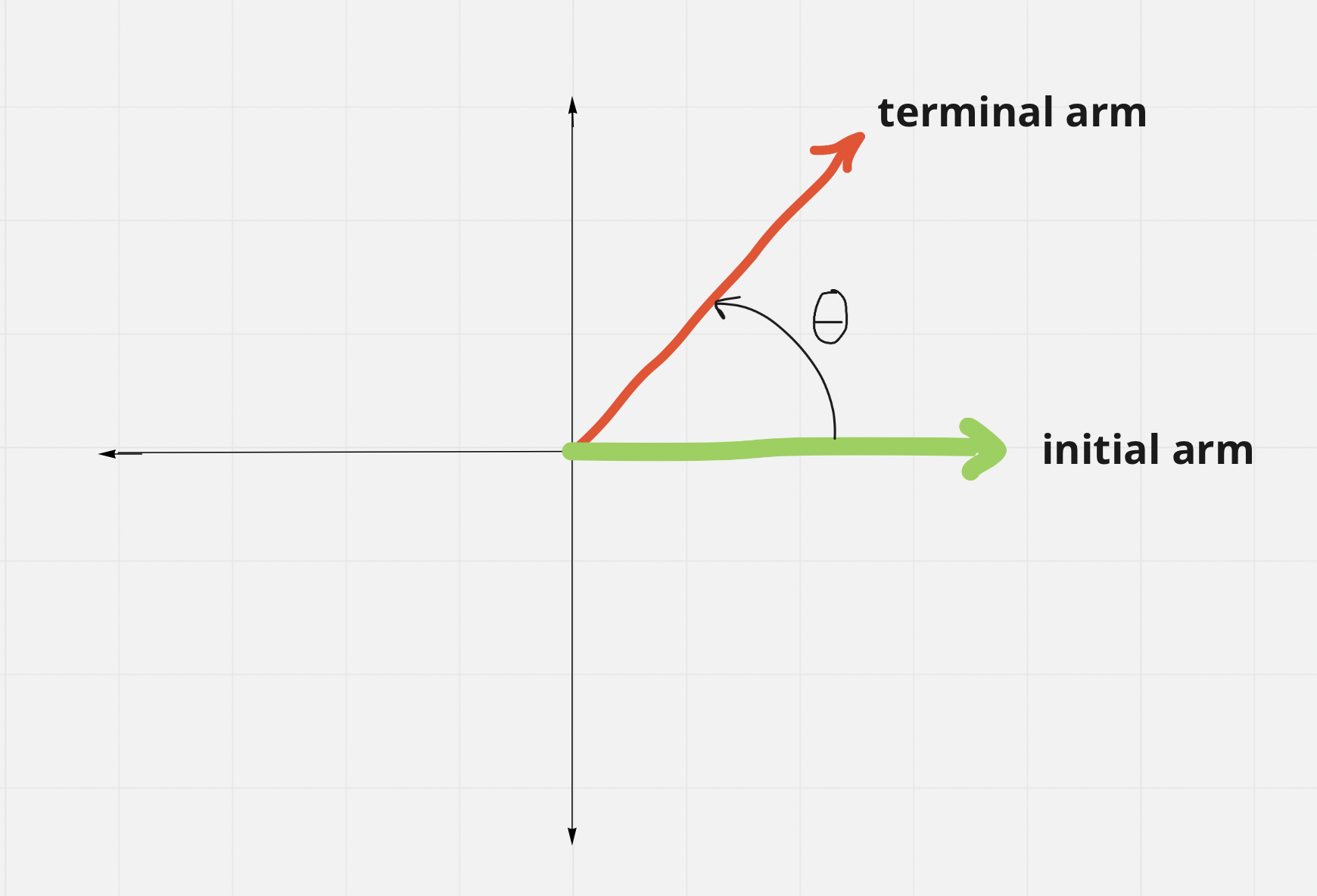
The angle, θ, is known as the principal angle (PA)→ its value can fall between 0º and 360º depending on which quadrant the terminal arm is in
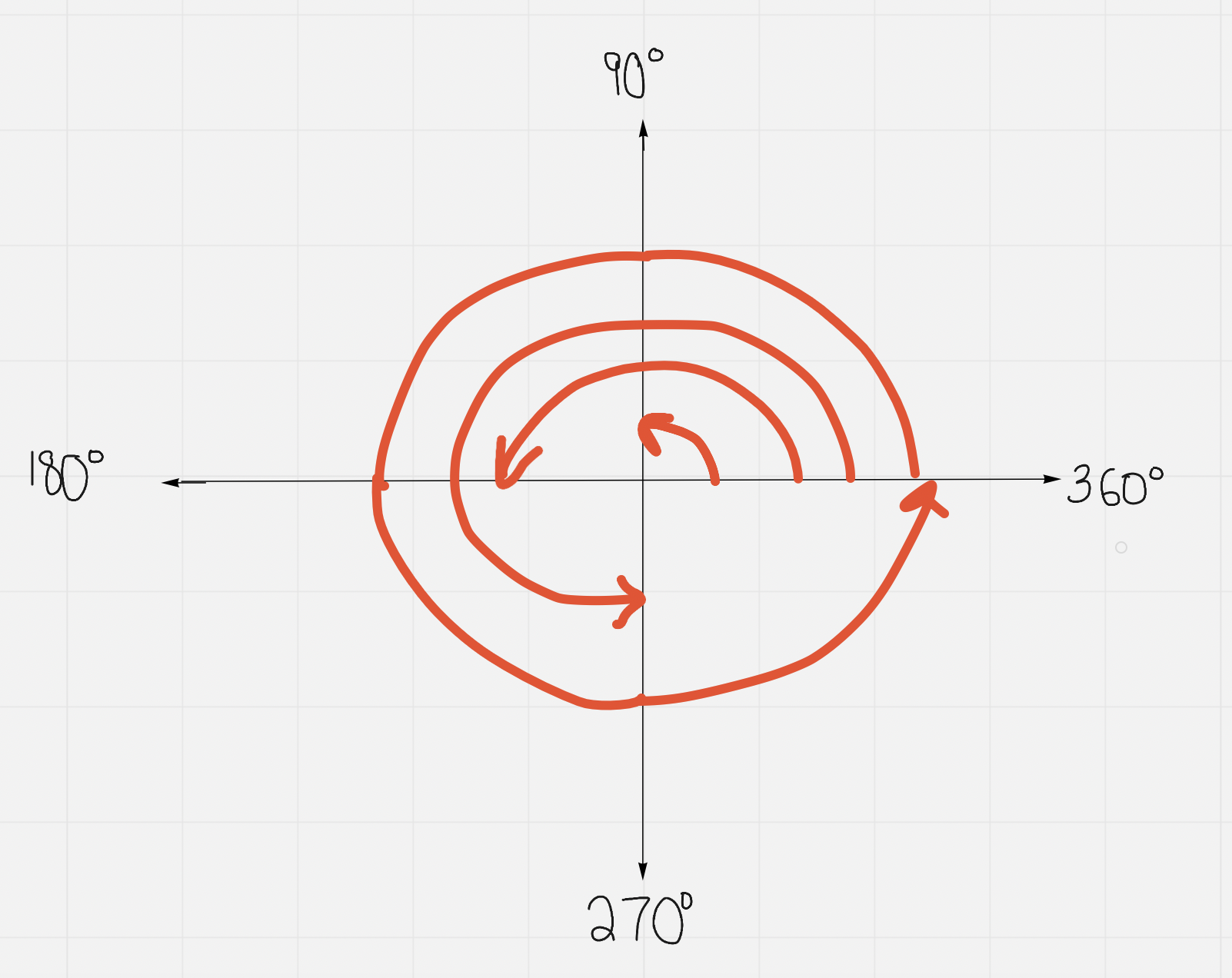
The related acute angle (RAA) sits between the terminal arm and the x axis in any quadrant
RAA and PA in Each Quadrant
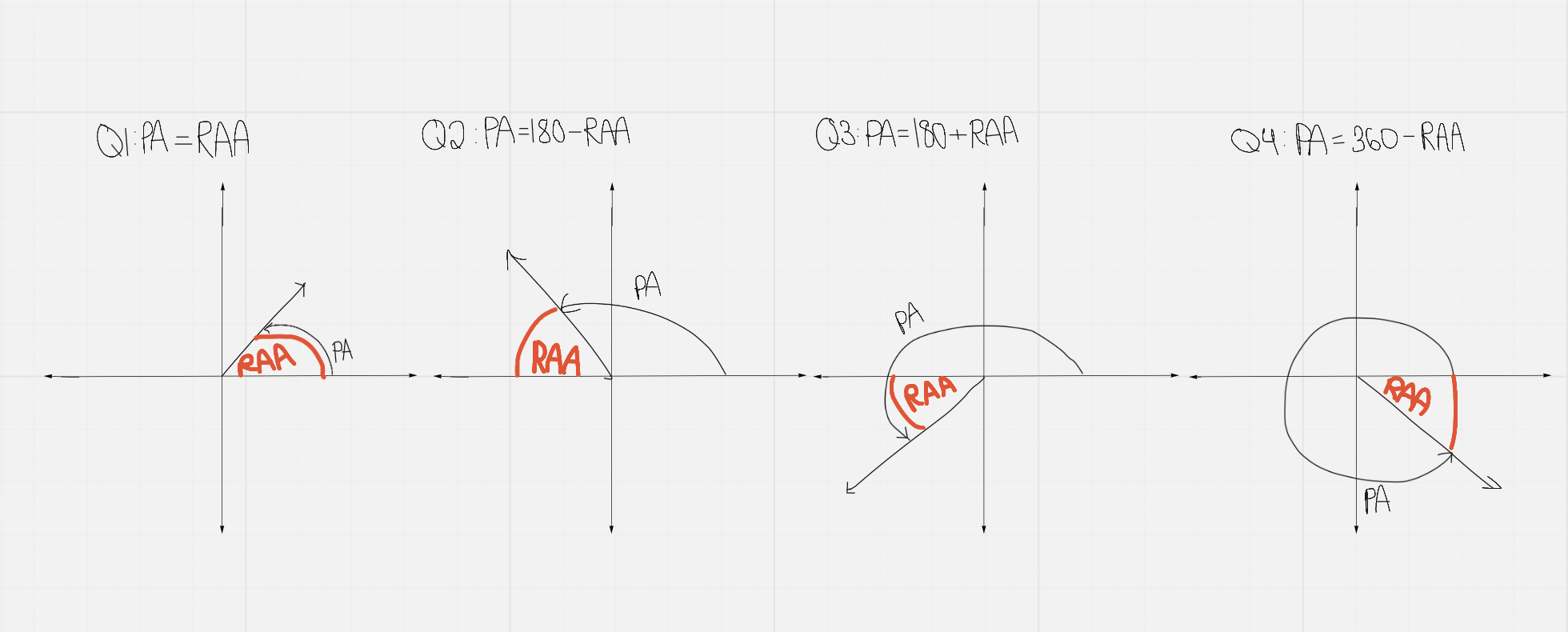
CAST Rule (or: All Students Take Chemistry Rule)
In each quadrant, the given ratio (indicated in the letter) is positive, and in all other quadrants it is negative
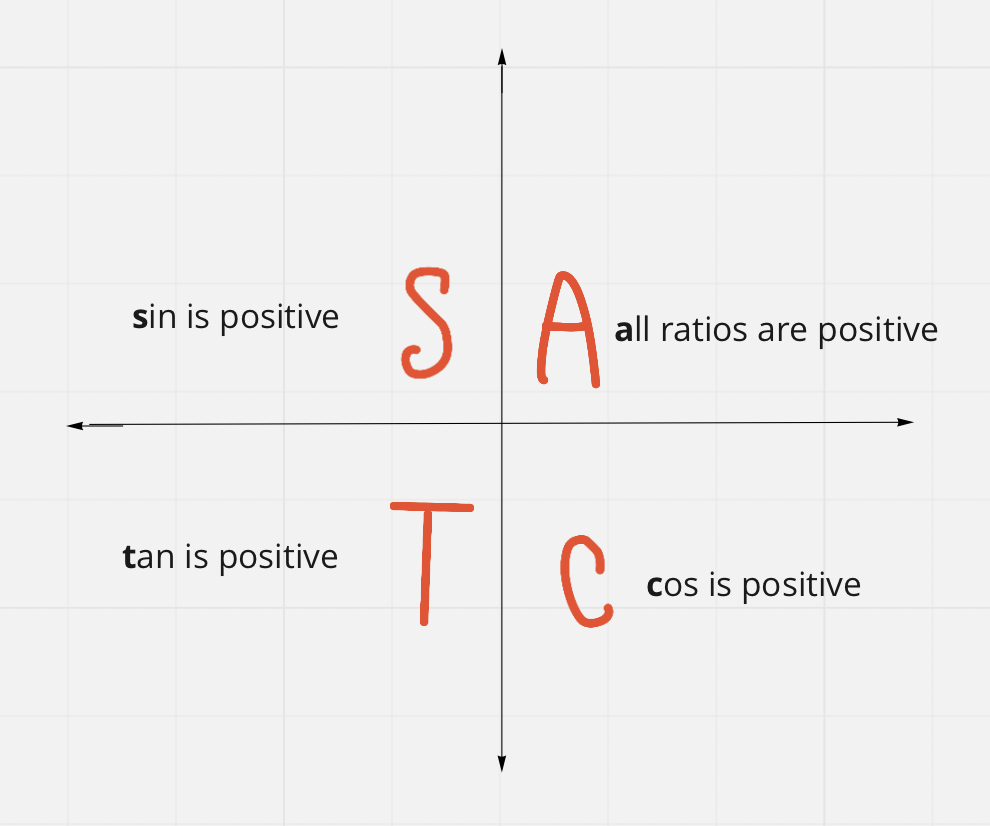
Evaluating Trig Ratios for Any Angle Between 0º and 360º
You may need to make a triangle (if given a point that the terminal line intersects through, for instance) and so you may need to use this tool to solve the problem
If a point (ordered pair) is given, then x and y are accounted for as you know what they are from looking at the point which is formatted (x,y)
Apply the formula used to find the circumference of a circle to SOH CAH TOA
Adapted SOH CAH TOA becomes:
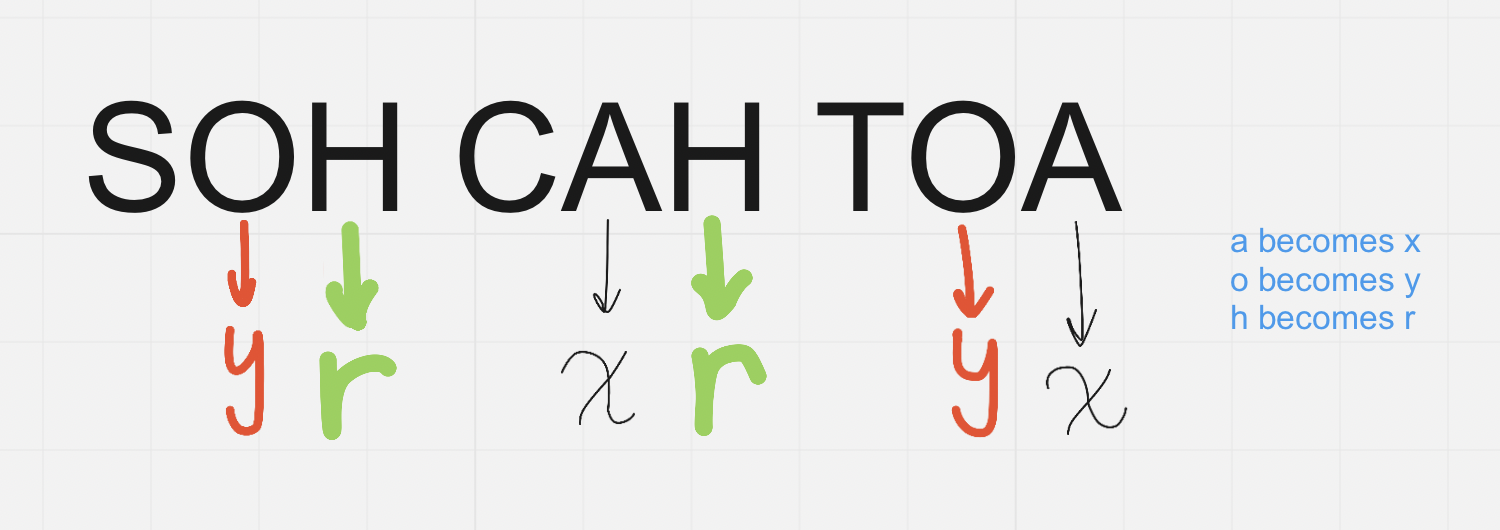
Use the Pythagorean theorem (adapted to circle, same formula → x² + y² = r² ) to get the missing value
Use a primary trig ratio to find the RAA:
ratio⁻¹(side O, A, H depending on question/side O, A, H depending on question) = RAA
Use RAA to calculate PA (dependent on the quad, Recall: RAA and PA in Each Quadrant graphic above)
Non-right Angle Triangles
For triangle ABC:
Sine Law

Cosine Law

11-05: Trigonometry and Trigonometric Ratios
Trigonometry: the study of how sides and angles of a triangle are related to each other
The Right Angle Triangle

A right angle triangle has a 90º angle
The side opposing the 90º angle is called the hypotenuse
the other two sides are called the legs
Labelling Triangles

The side opposite an angle and vertex becomes the lowercase letter of that angle and vertex
Pythagorean theorem
a² + b² = c²
leg² + leg² = hypotenuse²
used only for side lengths, cannot be used for angles
Trigonometric Ratios
Primary Trigonometric Ratios | Secondary Trigonometric Ratios |
|---|---|
sinθ = O/H | cscθ = H/O |
cosθ = A/H | secθ = H/A |
tanθ = O/A | cotθ = A/O |
Secondary trig ratios are primary trig ratios, flipped
cscθ = 1/sinθ
secθ = 1/cosθ
cotθ = 1/tanθ
→ you can solve by using the reciprocal when facing a secondary trig ratio
SOH CAH TOA is the mnemonic device used for primary trig ratios (secondary trig ratios are just flipped)
Angles of Elevation and Depression
Most often seen in word problems
Angle of Elevation

The angle between the line of sight and the horizontal from the eye
Angle of Depression

The angle when looking down, between the line of sight and the horizontal from the eye
Because of Z pattern angles, the angle of elevation and depression are actually the same (and are dependent on a question’s phrasing)
Exact Values
You may not use decimals here, as that is not the true exact value
Special Triangles
Used to find the exact values for 45º, 45º isosceles triangles and for 60º, 30º triangles (remember: sum of a triangle’s angles must be 180º)
Remember that you must rationalize your final answer

Trig Ratios, Angles Greater Than 90º
Angles in standard position are always measured from the initial arm to the terminal arm, counterclockwise (arrow always drawn)
Angles measured closckwise are negative

The angle, θ, is known as the principal angle (PA)→ its value can fall between 0º and 360º depending on which quadrant the terminal arm is in

The related acute angle (RAA) sits between the terminal arm and the x axis in any quadrant
RAA and PA in Each Quadrant

CAST Rule (or: All Students Take Chemistry Rule)
In each quadrant, the given ratio (indicated in the letter) is positive, and in all other quadrants it is negative

Evaluating Trig Ratios for Any Angle Between 0º and 360º
You may need to make a triangle (if given a point that the terminal line intersects through, for instance) and so you may need to use this tool to solve the problem
If a point (ordered pair) is given, then x and y are accounted for as you know what they are from looking at the point which is formatted (x,y)
Apply the formula used to find the circumference of a circle to SOH CAH TOA
Adapted SOH CAH TOA becomes:

Use the Pythagorean theorem (adapted to circle, same formula → x² + y² = r² ) to get the missing value
Use a primary trig ratio to find the RAA:
ratio⁻¹(side O, A, H depending on question/side O, A, H depending on question) = RAA
Use RAA to calculate PA (dependent on the quad, Recall: RAA and PA in Each Quadrant graphic above)
Non-right Angle Triangles
For triangle ABC:
Sine Law

Cosine Law

 Knowt
Knowt